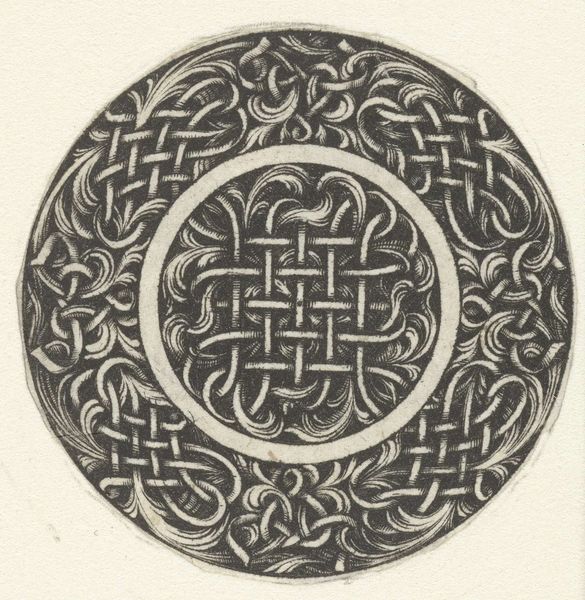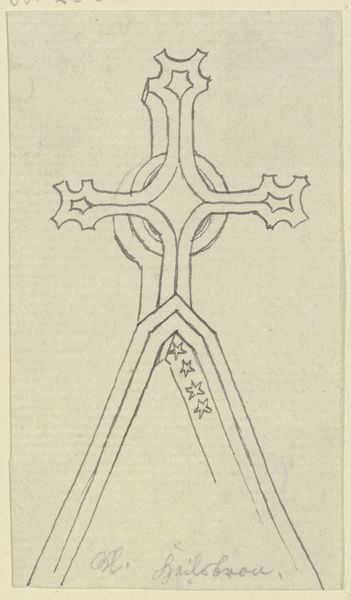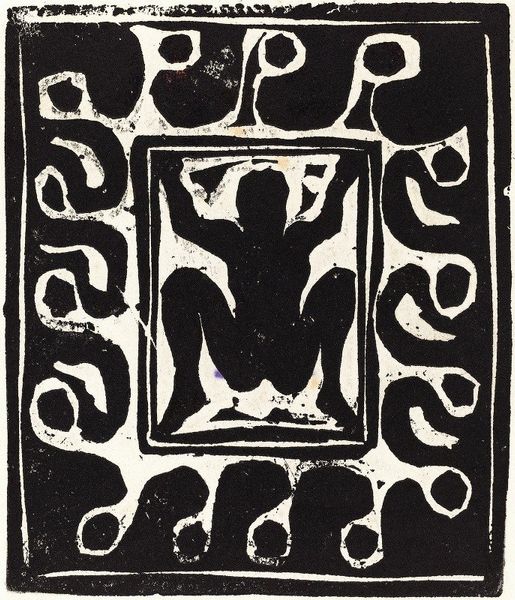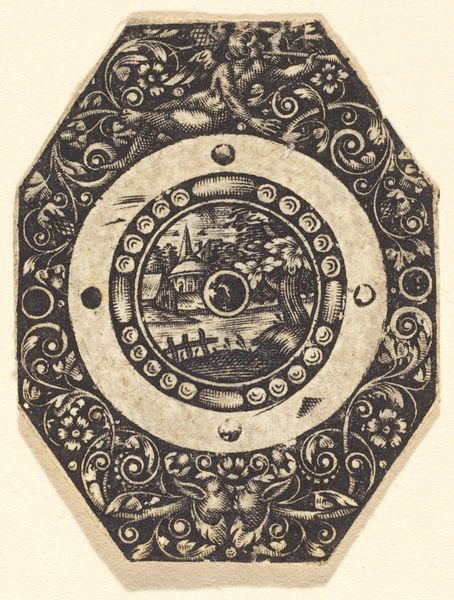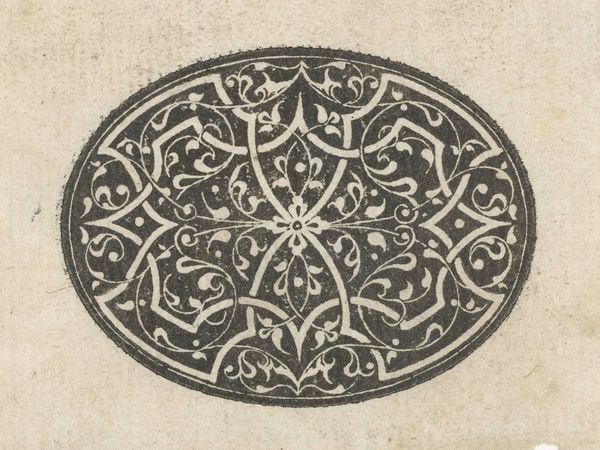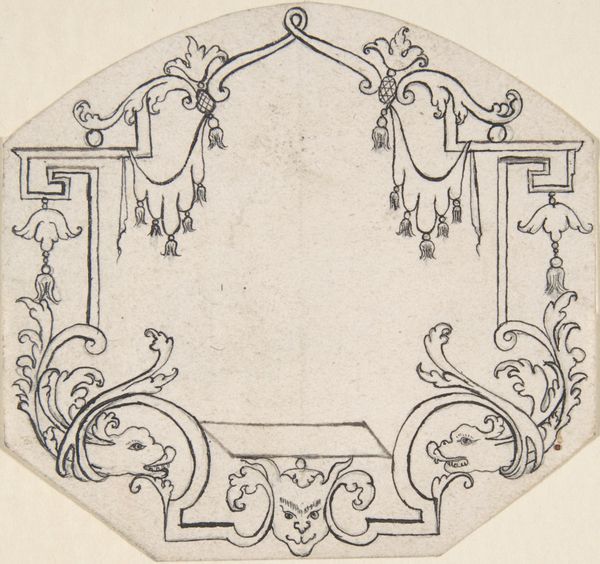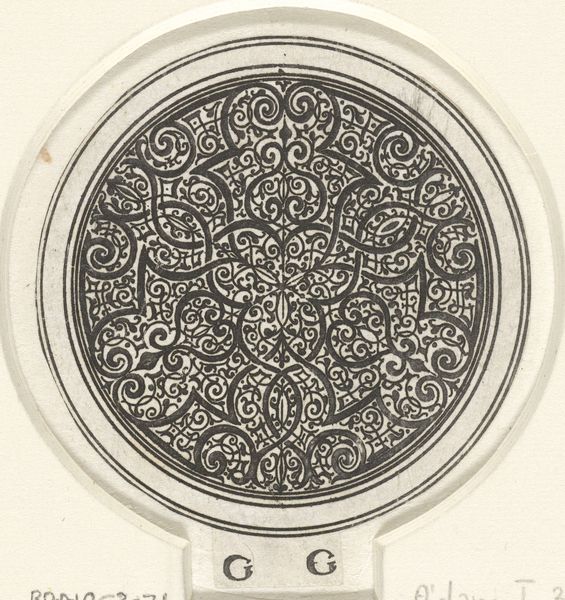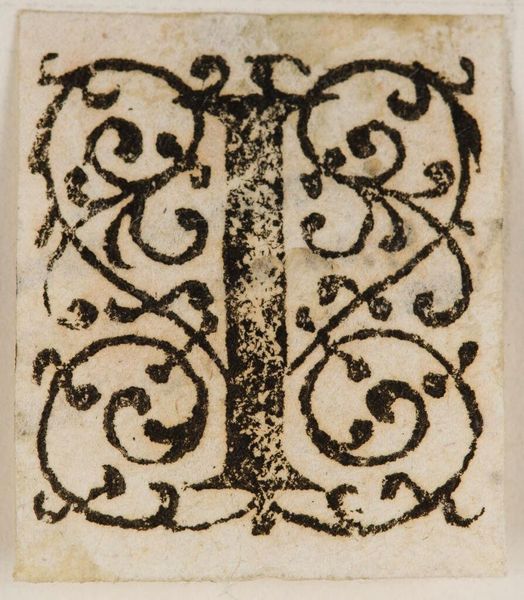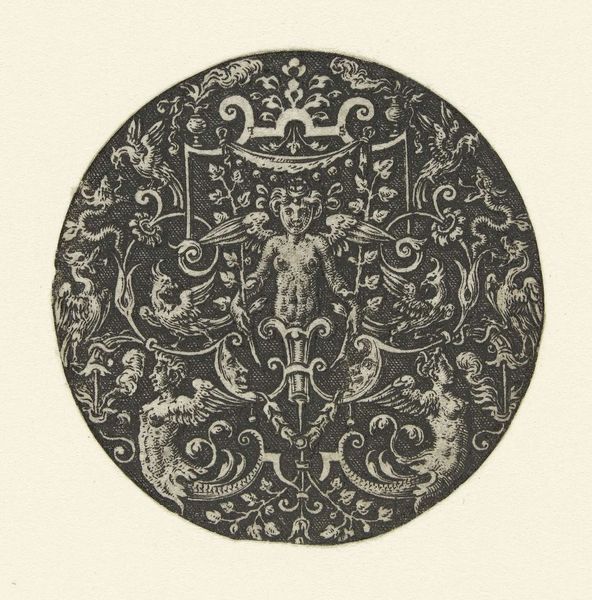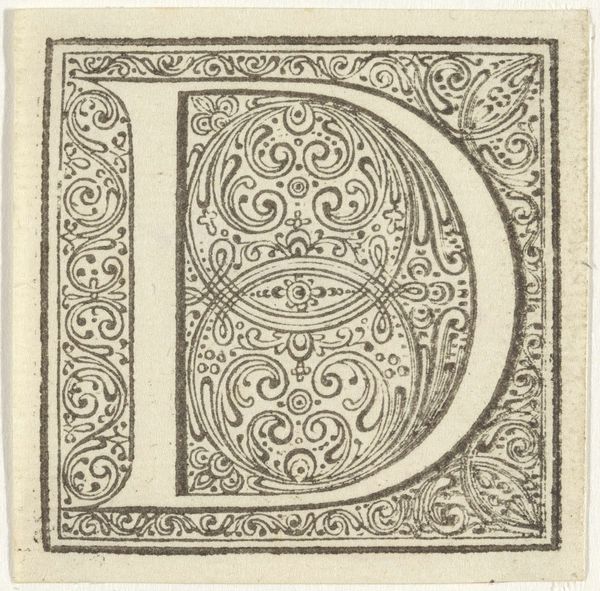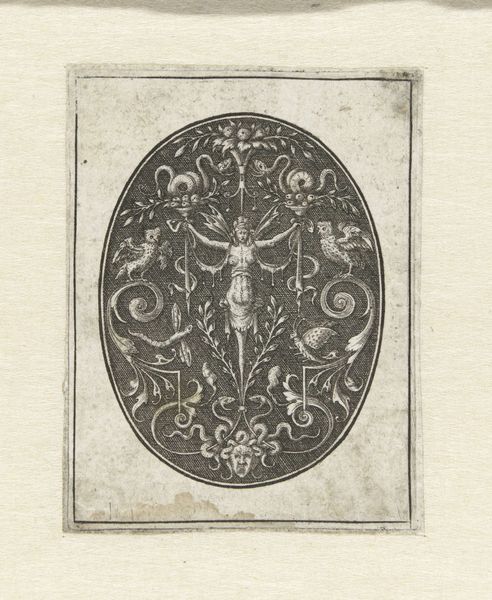
drawing, ink
#
drawing
#
asian-art
#
abstract
#
ink line art
#
ink
#
geometric
#
symbolism
Copyright: Public domain
Curator: Nicholas Roerich created this ink drawing in 1918. It's titled "Vignette for book 'N. K. Roerich.'" What catches your eye first about it? Editor: Immediately, the stark simplicity hits me—that solid black against the bright white. It feels both ancient and strangely modern. Like a digital glyph from some future past. Curator: Roerich’s oeuvre certainly plays with those themes. He explored Asian art and symbolism extensively, particularly through the lens of Theosophy. This particular drawing makes great use of geometric abstraction to offer meaning. We can discuss Roerich’s well documented interest in the esoteric. Editor: Right. Esoteric, yes. It feels almost talismanic. And even though it's so minimal, I find myself wanting to reach out and trace the lines with my finger, like a maze or some forgotten ritual. What's this particular symbol though? I get a powerful sense of... protection, somehow. Curator: Precisely! It depicts a "vajra," a ritual object that's very important in Tibetan Buddhism and other Indic religions. The “vajra” is a symbolic representation of the properties of a diamond, namely indestructibility, and those of a thunderbolt, symbolizing irresistible force. In terms of the era, consider also the historical context. It's 1918 and Roerich is capturing both this quest for inner strength, and the force needed to withstand the collapse happening around him with World War I and the Russian Revolution, framing it within broader spiritual and historical patterns. Editor: Knowing all that gives it so much more weight! This isn't just some abstract doodle, but a powerhouse of intention crammed into the smallest space. Even now, it transmits something… it's hard to put into words. It gives the impression of solidity but it also feels volatile. Curator: It absolutely transcends its humble origins. I mean, it’s “just” a book vignette, but when you examine its visual language within the historical context, you get something really special. Theosophy and Eastern spirituality were important influences during the war and early modern periods. They still resonate. Editor: It's amazing how something so small and seemingly simple can hold so much. I guess that's the power of art, isn't it? I mean, for me it has such an appealing combination of form and depth; almost contradictory but truly affecting. Curator: Indeed. A testament to how visual expression when carefully situated in a broader political and intellectual landscape offers lasting historical, aesthetic, and symbolic reverberations.
Comments
No comments
Be the first to comment and join the conversation on the ultimate creative platform.
